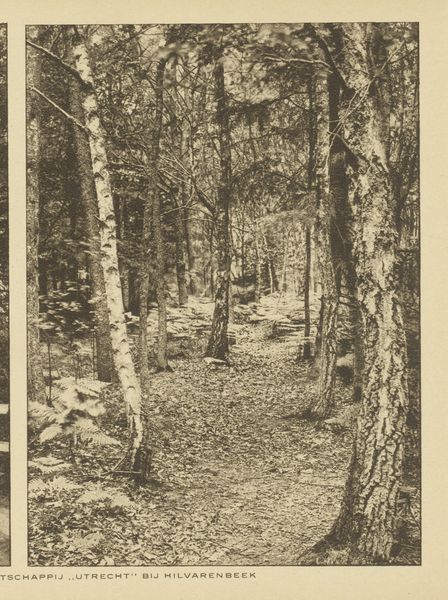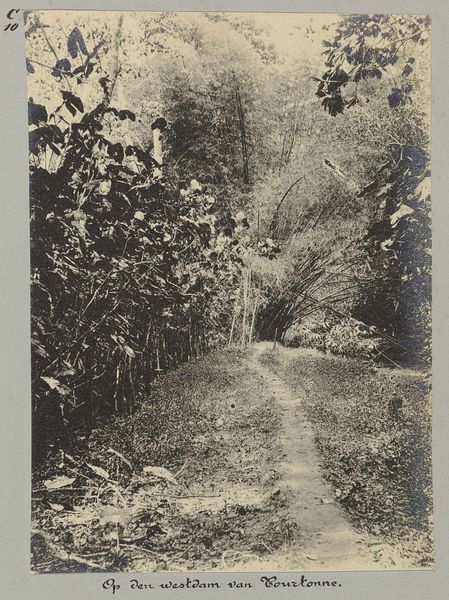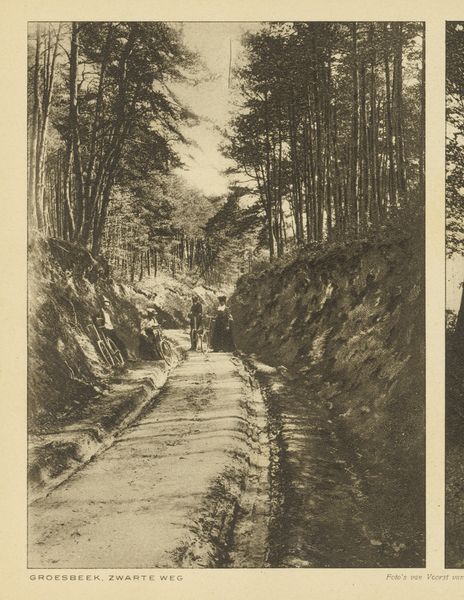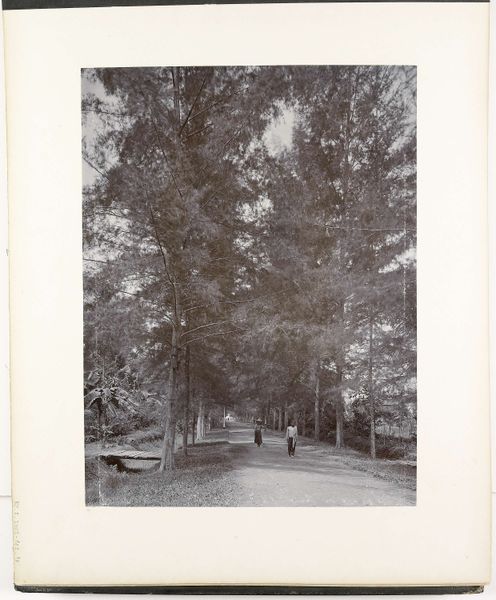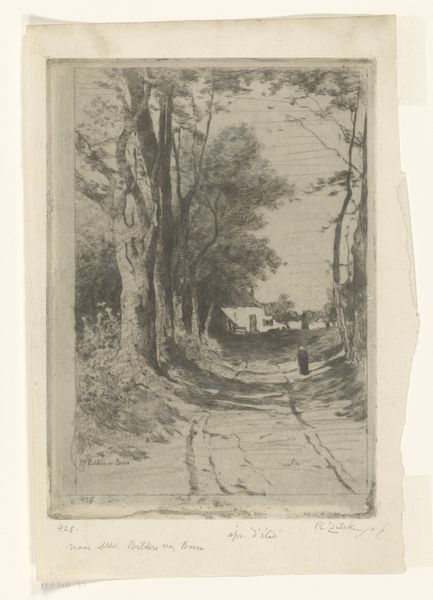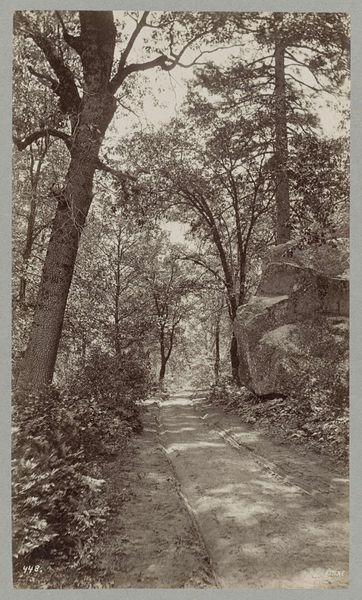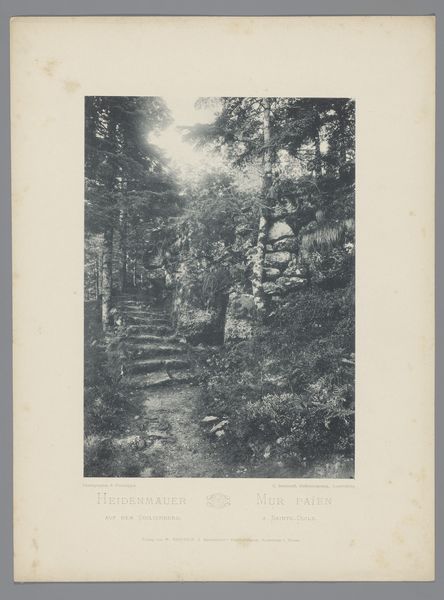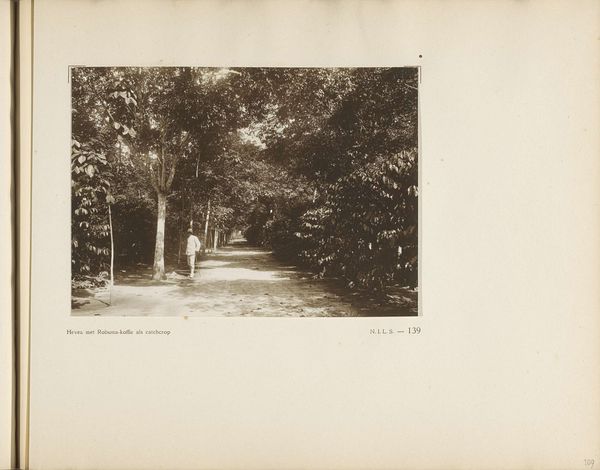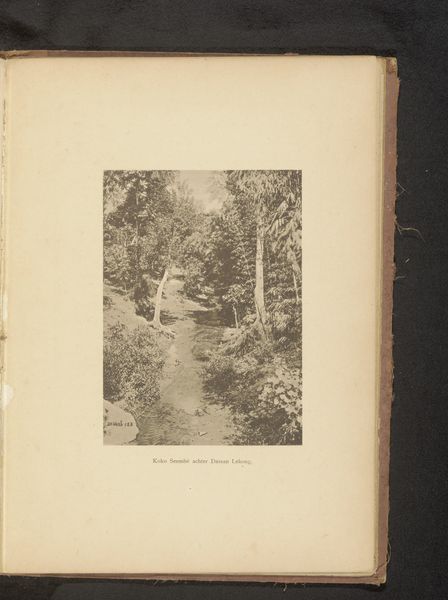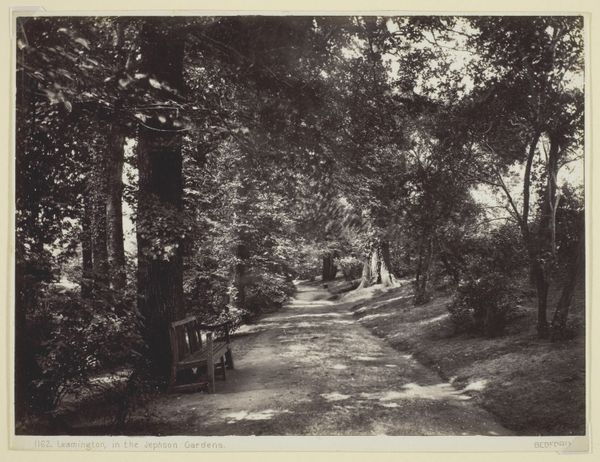
print, photography, pencil
#
pencil drawn
# print
#
pencil sketch
#
landscape
#
river
#
photography
#
road
#
pencil drawing
#
pencil
#
naturalism
Dimensions: height 161 mm, width 117 mm
Copyright: Rijks Museum: Open Domain
Editor: Here we have "Gezicht op een pad langs de Geul bij Valkenburg, Limburg," a landscape, dating to before 1915, rendered in pencil and print. It possesses a quiet, almost somber mood. What social dynamics or narratives do you believe are woven into this image? Curator: The quiet you perceive can also be interpreted as a deliberate retreat into nature, characteristic of certain responses to rapid industrialization at the turn of the century. Given its date, before 1915, this path represents more than just a scenic route; it reflects an active choice, perhaps even a critique of societal norms and urbanization. How might access to such natural spaces be connected to class and privilege at that time? Editor: That’s a fascinating point. I hadn't considered how the ability to retreat to such a place would itself be a marker of social standing. Do you think the artist was conscious of this dynamic? Curator: Consciousness is complex, but certainly artists of this era were often deeply embedded in social and political dialogues. The choice to depict this specific view – emphasizing the untamed nature, the path itself – becomes significant. Consider also the potential implications of representing Limburg, a region with its own unique socio-political identity within the Netherlands. Editor: So, you’re saying this seemingly simple landscape could also function as a quiet statement about access, privilege, and regional identity during a time of great change? Curator: Precisely. The artwork invites us to think about who has the privilege of leisure and escape, and how even seemingly bucolic scenes are inevitably marked by the social and political contexts in which they are created. It pushes us to consider the broader intersectional issues surrounding the natural landscape and its place within art history. Editor: That gives me so much more to consider when looking at seemingly straightforward landscape art. Curator: Indeed, art is rarely just what meets the eye. This exploration reminds us that we are always viewing art through a specific social lens.
Comments
No comments
Be the first to comment and join the conversation on the ultimate creative platform.
